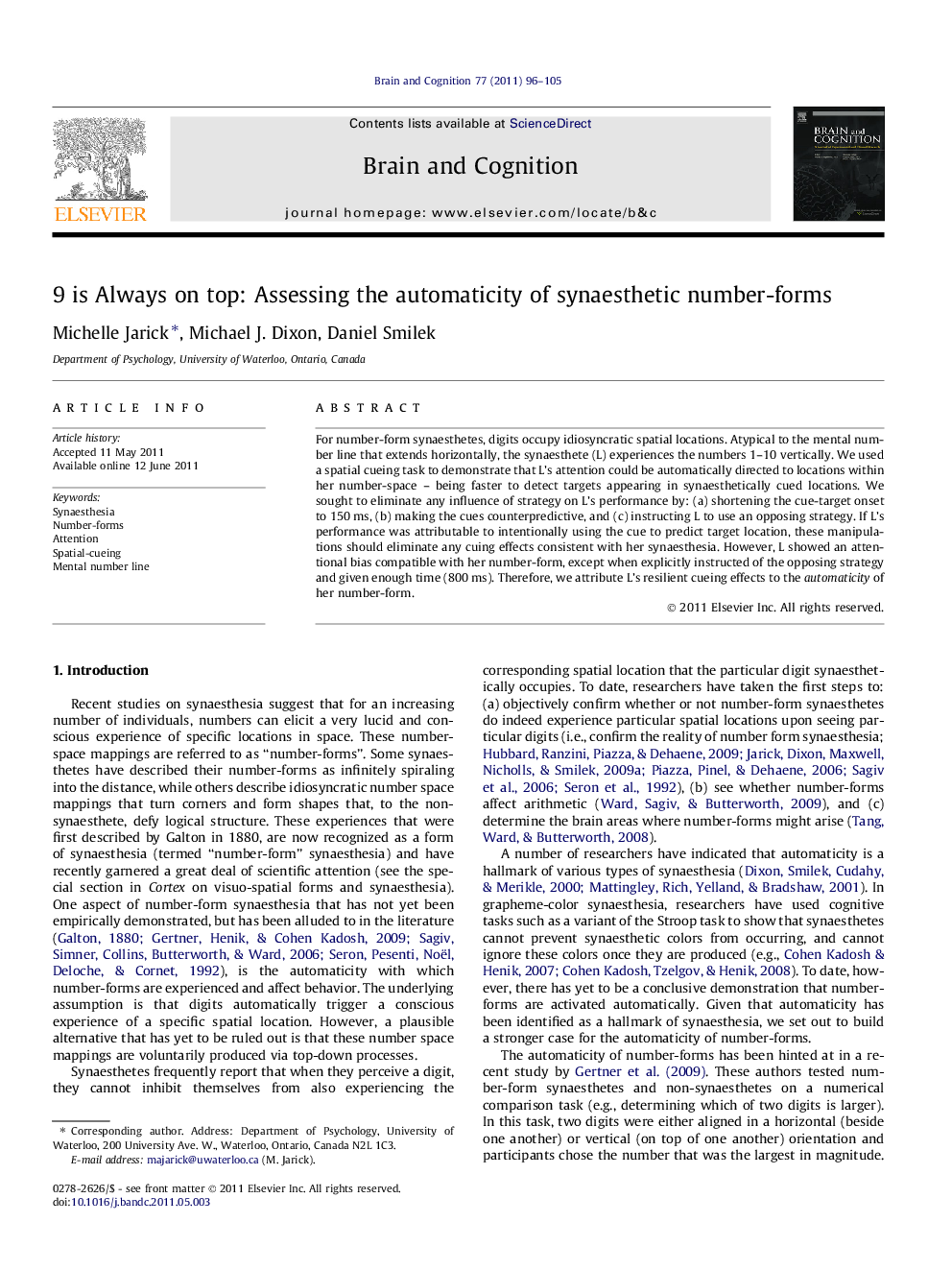| کد مقاله | کد نشریه | سال انتشار | مقاله انگلیسی | نسخه تمام متن |
|---|---|---|---|---|
| 924742 | 921264 | 2011 | 10 صفحه PDF | دانلود رایگان |

For number-form synaesthetes, digits occupy idiosyncratic spatial locations. Atypical to the mental number line that extends horizontally, the synaesthete (L) experiences the numbers 1–10 vertically. We used a spatial cueing task to demonstrate that L’s attention could be automatically directed to locations within her number-space – being faster to detect targets appearing in synaesthetically cued locations. We sought to eliminate any influence of strategy on L’s performance by: (a) shortening the cue-target onset to 150 ms, (b) making the cues counterpredictive, and (c) instructing L to use an opposing strategy. If L’s performance was attributable to intentionally using the cue to predict target location, these manipulations should eliminate any cuing effects consistent with her synaesthesia. However, L showed an attentional bias compatible with her number-form, except when explicitly instructed of the opposing strategy and given enough time (800 ms). Therefore, we attribute L’s resilient cueing effects to the automaticity of her number-form.
► Number cues oriented a number-form synaesthetes’ spatial attention rapidly, within 150 ms between cue and target onset.
► Rapid orienting occurred only when the targets were aligned with the synaesthetes’ number-form.
► Automatic cueing-effects for the synaesthete persisted despite explicit instructions to use a strategy dictated by the cues.
► No cueing effects were found for the group of non-synaesthetic controls.
Journal: Brain and Cognition - Volume 77, Issue 1, October 2011, Pages 96–105